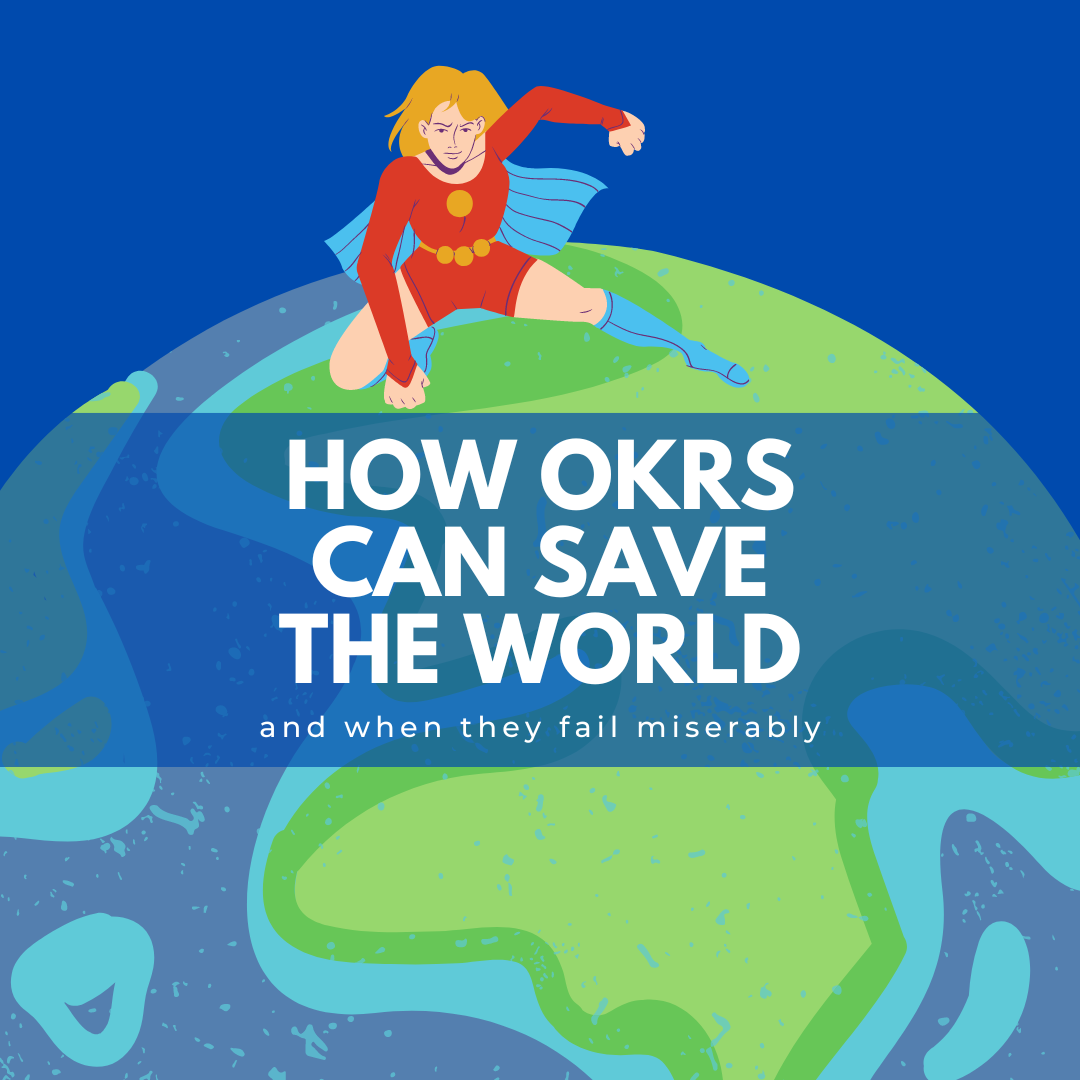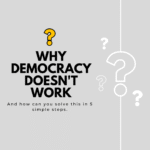…and when they fail miserably, I should have added.
OKRs, SMART goals, KPIs, etc. – these are all great ways of making the change in your organisation. But none of them actually work without a few fundamental things in place:
- clarity of what you want to achieve
- alignment in your team
- commitment and discipline
I worked in quite a few companies throughout my career and had a chance to experience rollouts of different frameworks and methodologies. In some cases I was on the receiving side, when you get a very brief introduction about for instance OKRs, and then you are asked to set a few objectives for yourself, or your team, your department, define key results, and off you go. Every quarter or six months, your manager would chase you to report on your objectives and you would spend some time trying to massage them in order to show the progress. I’ve been on the other side, when I tried to roll out new methodologies and frameworks and I made tons of mistakes while doing it. Not everything worked out perfectly, but I had my successes (some big ones).
Today I am in a very typical situation when my CEO told me that it was decided and we as a company going to implement OKRs throughout the whole organisation. I love OKRs. To me, this is a great opportunity to get the company into motion and implement big strategical changes. But the approach is quite often wrong.
Top four mistakes you can make with OKRs
- Thinking that by introducing OKRs something will magically change.
- Expecting good objectives and key results from your team, when you don’t have a clear vision and strategy yourself.
- Defining too many objectives.
- Bottom-up approach
If you agree, and all four bullet points above make sense, feel free to skip the next few paragraphs. Otherwise, let’s dive into each of those…
1. Thinking that by introducing OKRs something will magically change
It is the most common mistake. You heard about this amazing framework that worked somewhere, and since it worked there, it’ll work in your company. So what do you do? Right, just tell your team, this is the solution and it will change everything. And then you forced everybody to have more meetings, brainstorm their objectives, put them on paper, share with the whole company, and you wait for the magic to happen. And it doesn’t. What does happen though – is every department, or the team, have way more admin to do, and their work is even more siloed than it used to be. Why? Because now they are chasing their own objectives, that become their own priorities. Or they treat this as another admin exercise they have to do every now and then just to please management. And they stick to their business as usual.
OKRs, like any other framework or methodology – it’s a tool, that needs to be used wisely in order to see the results. People need to understand when and how to use this tool, and when it’s not the best choice. And it is a process and an ongoing journey that never ends. It needs to become your routine and you and everybody in your organisation need to have the discipline to make OKRs work.
2. Expecting good objectives and key results from your team, when you don’t have a clear vision and strategy yourself
Everything starts with the head. If you are a CEO or part of the board – fantastic. This is where it all begins. As the leaders of the company you need to have very clear and concrete goals for every year and every quarter. Your strategy need to be well-defined and easy to follow. You need to have a process in place when you communicate (on regular basis) those goals and the strategy to the whole company and in-depth to the next layer in management (typically heads-of).
Only then you can start challenging your team with OKRs and set the expectation that their objectives (for their departments, teams. etc.) are contributing towards a bigger company goal and are aligned with the overall strategy.
3. Defining too many objectives
Objectives in OKRs are big changes, in many cases behavioural changes. They redefine how you run your business, your approach, behaviour. Those are not easily achievable milestones.
If you have more than one OKR set for a single team for the next quarter – this is way too many. You and your team feel that you can deliver more? Then your objective is not challenging enough. Change it.
What happens when you have too many objectives? Nothing gets done, or people get overworked and burnt out. Constant context switching between different activities to reach those defined key results, on top of your regular work responsibilities – this is exhausting. So stick to a single, challenging objective, and push it hard to achieve as many key results as you can.
4. Bottom-up approach
This one is connected to the second bullet point. If you are trying to be a nice leader, let people decide and define their own OKRs – this is great. This is definitely a great intention. And it might work if you have a very well-defined strategy for the whole organisation. It would work even better if you have a very clear set of goals for the year and every quarter.
But even if you’ve done your job well, working out your big plan, and sharing it with the whole company, there is still a very big chance that with the bottom-up approach, you’ll cause more damage than good. Why? Because you leave it up to individual departments and teams to figure out their objectives. In most of the cases, they will naturally team up with their peers, brainstorm and come up with very good objectives. For them! Their objectives will not be aligned with other departments or teams. But in 100% of the cases, they have to work together to achieve any of their key results (otherwise those are bad objectives they came up with). And since they have to collaborate with other teams, they need to be in alignment, and their OKRs need to be in alignment.
So, how do you save the world with OKRs?
10 simple steps to implement OKRs right
- Define your big company goal for the year, develop the strategy how to achieve this goal.
- Share the goal and the strategy with the whole company, and make sure this information is available and easy to find.
- Build a process when you frequently communicate with the whole company the goal and the strategy, and the progress made (also any changes in the strategy or goal adjustments).
- Share your decision/intention to implement OKRs, and why it is important (in most cases you acknowledge that something is not working in your company and you want to drive the change to improve it, and with OKRs you want to have clarity and transparency for everybody with the objectives that would contribute to the overall success)
- Push everybody through the training – you need to make sure everybody in the company understands the principle of OKRs and knows how to define good objectives and key results. Otherwise, it’ll be different interpretations and you’ll waste a lot of time on realignment on what it is and how it works.
- Organise an offsite full-day session for your direct reports (heads-of) so they can come up with objectives for each of their departments (one for each for the next quarter), that would contribute to the completion of the big goal. They all need to be in agreement with each other’s objectives and key results by the end of the day and present it to the board the next day.
- Ask your direct reports to organise a similar session for their direct reports and so on.
- Define a communication process to realign with everybody on the progress of their work on OKRs (ideally on weekly basis)
- Analyse outcomes on a quarterly basis and share the results with the whole organisation.
- Praise everybody for achieving key results publicly and review and discuss the challenges some teams faced with making progress on their objectives.
If you don’t know where to begin or don’t feel you have a good understanding of OKRs, I would recommend a book from Bart Den Haak – Moving the Needle With Lean OKRs: Setting Objectives and Key Results to Reach Your Most Ambitions Goal. This is an amazing resource with lots of great examples, history, and very well-explained principles for defining great objectives and key results.
What’s your experience with implementing OKRs? Any great books, or courses you would recommend? Please leave a comment below, I’d love to hear back. Also if you have any questions or need advice please feel free to shoot me an email.



